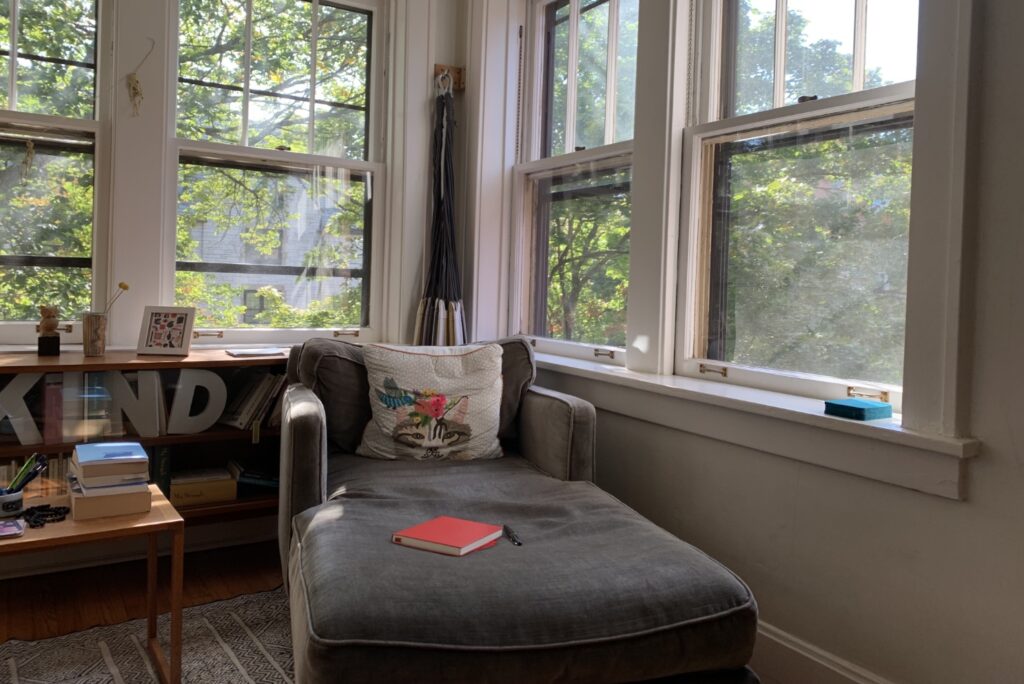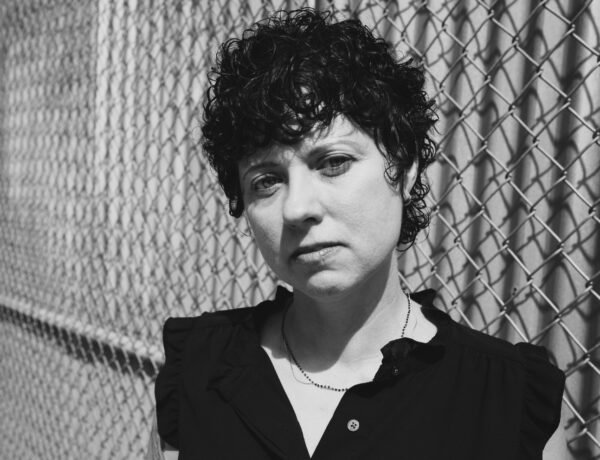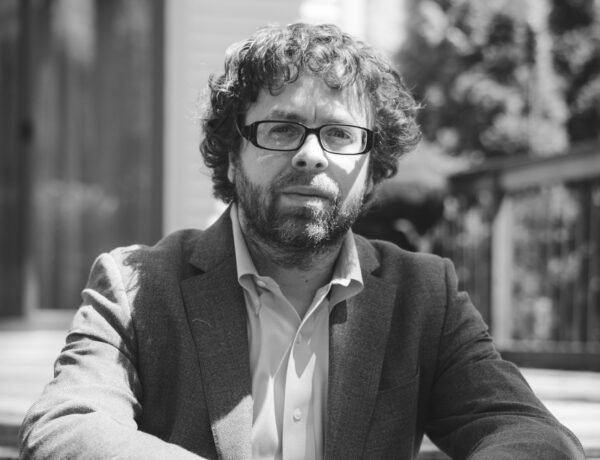Joshua Corey is a writer, known for his works as a poet, critic, translator, and author of such books like Beautiful Soul: An American Elegy and How Long Is Now.
He is a Gen-Xer from New Jersey, who spent his twenties and thirties moving around the country pursuing various literary degrees. Joshua has now settled in Evanston, Illinois with his wife and teenage daughter, where he teaches English and creative writing at Lake Forest College.
Each week, we publish a new daily writing routine from a famous author. Subscribe to our newsletter so you don’t miss out!
Hi Joshua, great to have you on Famous Writing Routines. For those who may not know, can you please tell us a little bit about yourself?
I ‘m a Gen-Xer from New Jersey who spent my twenties and thirties moving around the country pursuing various literary degrees before settling just outside Chicago, where I’m a professor of English at Lake Forest College.
I started out as a poet, and that’s still the biggest part of my writerly identity, but these days I also write novels, translations, and criticism, and I’m starting to fool around with screenplays. There are two major strains to my work: on the one hand, I have a strong historical imagination in which my Jewish Hungarian mother’s experience of the Holocaust looms large.
On the other hand, I’m fascinated by science fiction and utopian schemes for a better world, and I feel a strong obligation to try and imagine some sort of viable future, which is a daunting task nowadays. The two strains overlap in bizarre but productive ways in my most recent poetry collection, Hannah and the Master.
Can you take us through the creative process behind your novel, How Long Is Now?
How Long Is Now is my second novel to be published, and it’s kind of a spiritual sequel to my first novel, Beautiful Soul: An American Elegy. Beautiful Soul was inspired by the enigma of my mother’s character and the ways she was haunted by her historical experience while living an upwardly-mobile existence as a suburban housewife. If that novel was for my mother, How Long Is Now is for my father.
It began as a barely fictionalized account of my travels in Europe (with a significant side trip to Morocco), which I wrote while on sabbatical from teaching in 2014. For several years I tinkered with the thing, making it more scene-driven and less discursive, but I couldn’t find a satisfying shape for it.
Then disaster struck; in 2017, my father suffered a car accident that paralyzed him from the upper chest down; he died of complications from the accident about a year later. It was after his death that I returned to the novel and developed its other major plot strand: a re-imagination of my parents’ courtship and marriage in 1960s New York City.
I would now say it falls into the category of autofiction: everything in it is true, though a lot of things are made up, and the tension between truth and fiction forms the channel by which I was able to mourn my loss. I call it a shaggy dog story about grief.
Discover the daily writing habits of authors like Stephen King, Neil Gaiman, and Gillian Flynn with Famous Writing Routines Vol. 1 and learn how to take your writing to the next level. Grab your copy today!
What does a typical writing day look like for you?
Before the pandemic, I did most of my writing on the Metra train from Evanston, where I live, to Lake Forest, where I teach. Nowadays I mostly write at home, yet the process looks more or less the same. I like to get up before my wife and daughter and sit with my notebook and a cup of coffee in the sunniest part of our apartment for an hour.
Sometimes I write fiction or work on a poem, but mostly I’m just trying to find my way into the day, often in response to something I’m reading. For example, this morning I was sitting with Czeslaw Milosz’s strange and wonderful book The Land of Ulro, a very personal and at times esoteric memoir-essay about the challenges of being a poet in exile.
Milosz of course was literally an exile from Poland, but in a strange way I identify with his sense of estrangement as a poet living in what can sometimes feel like a thoroughly post-literate society. I’m reading The Land of Ulro (the title comes from William Blake, with whom Milosz and I are both fascinated) as a kind of how-to book, a guide to survival as an artist in inimical conditions.
I’d like to put this sentence from the book on index cards and hand them out to every writer I know: “We delude ourselves by insisting on ‘audience response,’ when our real purpose is the cultivation of our own resources; and we are dependent on the eyes and ears of others, however few in number, as a measure of what is dead and what alive in us.”
Where was I? Oh yes, my routine. In the summer, like now, it looks like this: I read and write in my sunny corner until I’m interrupted or it’s time to make breakfast. The rest of the morning is the time for composing, which I mostly do by hand in a series of Moleskine or Leuchtturm notebooks, with a fountain pen, no less! These are indulgences I feel I’ve earned.
In the afternoon I do gruntwork, whether that’s typing up what I’ve written (but I often let weeks or months pass before that happens), editing a manuscript, or working the weary round of correspondence with agents and editors, etc.
Quite recently I deleted Twitter from my home screen and only use it occasionally to broadcast something, rather than permitting it to colonize my every waking hour; I’m a lot happier and sleeping much better! Highly recommend it. Sometimes in the nice weather I’ll walk or bicycle down to a coffee shop to read and scribble, but that’s a much smaller part of my routine than it used to be.
Do you have a target word count that you like to hit each day?
Nope. When I’m really going on a long project like a novel I try to touch base with the work each day, but I no longer worry about word count or writing for a certain number of minutes or hours. For better or worse my internalized writing machine is pretty relentless! If I don’t write anything for a few days it’s usually because I’m percolating something; I’ve trained myself to be less anxious about periods of silence because they always come to an end.
How did the COVID-19 pandemic and lockdowns affect your routine?
I feel like I mostly addressed this above, but the first year or so of the pandemic affected not only how I write but what. My entire family came down with what we only afterward realized was COVID in February, 2020; as things went south for the world in March we retreated to the safety of our building.
We live in a small apartment building, and cannot overestimate the value of the pod we formed with two other families with kids in preserving our sense of sanity and community. Unable to write in the normal way, I hit upon something new for me: starting on March 18, and every day thereafter for one hundred days, I wrote a one-hundred-word response or review of that day, accompanied by a single photograph that I took with my phone.
This small discipline helped me find my way back to writing, and made me feel a little less helpless; it made me more observant, not only of what was happening around me but of the changes happening within. It had its political side, too, as so much of the climate of that period was shaped by the 2020 election and the murder of George Floyd.
I’ve put this project together in the form of an ebook called shelter in place that anyone can download off of my website. I think it offers a good lesson for how to make art in difficult times: concentrate your attention on what’s in front of you, keep it simple, keep it small.
What does your writing workspace look like?
I can write almost anywhere. While my favorite spot is the sunroom area of my living room, I’ve also done a ton of writing on the train commuting to work, or sitting in my building’s backyard. I like to draft by hand in a notebook and then type things up on the computer, but sometimes I draft on my laptop. And I’m not above tapping out a poem or a short story on my phone if nothing else is handy.

Affiliate disclaimer: Some links on this website are affiliate links. We may earn a small commission if you make a purchase through these links, but only promote products we truly believe in. We disclose affiliate links and give honest reviews.



No Comments